40 Beautiful Types of Purple Succulents (With Pictures)
Purple is a beautiful color. It’s also the best color when it comes to succulents! There are so many different types of purple succulents, that you’ll never run out of options for your garden. Below we’ve listed our top 40 favorite succulent species – they’re perfect for any occasion and can be found all around the world!
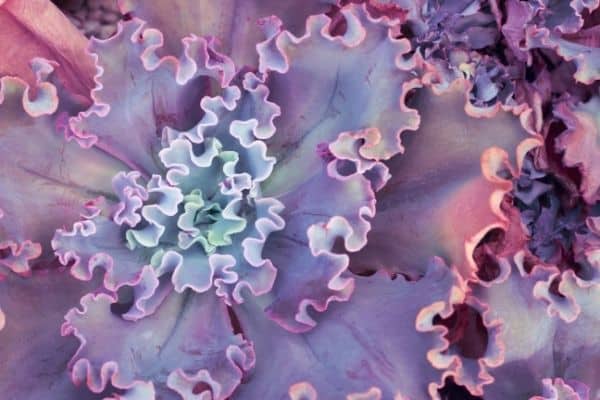
Related Post:
1,000 Types of Succulents With Pictures
Contents
- 1 Echeveria ‘Perle von Nürnberg’
- 2 Graptopetalum ‘Superbum’
- 3 Sedeveria Lilac Mist
- 4 Graptoveria Debbie
- 5 Echeveria haagai ‘Tolimanensis’
- 6 Graptoveria ‘Araluen Gem’
- 7 Echeveria ‘Afterglow’
- 8 Graptoveria ‘Fred Ives’
- 9 Echeveria ‘Cubic Frost’
- 10 Sedum Dasyphyllum ‘Lilac Mound’
- 11 Kalanchoe x houghtonii
- 12 Sempervivum heuffelii ‘Notah’
- 13 Echeveria ‘Neon Breakers’
- 14 Echeveria ‘Orion’
- 15 Echeveria ‘Dusty Rose’
- 16 Sempervivum ‘Purple Beauty’
- 17 Anacampseros Rufescens
- 18 Echeveria Black Prince
- 19 Sempervivum ‘Raspberry Ice’
- 20 Echeveria Agavoides ‘Romeo’
- 21 Echeveria ‘Chroma’
- 22 Sempervivum heuffelii ‘Red Heuff f/ Munich University’
- 23 Sempervivum heuffelii ‘Beacon Hill’
- 24 Sempervivum heuffelii ‘Violet’
- 25 Sedeveria ‘Sorrento’
- 26 Sempervivum heuffelii ‘Mystique’
- 27 Sempervivum heuffelii ‘Inferno’
- 28 Sempervivum heuffelii ‘Purple Haze’
- 29 Sedeveria ‘Jet Beads’
- 30 Sempervivum heuffelii ‘Artemis’
- 31 Sempervivum heuffelii ‘Hot Lips’
- 32 Sempervivum heuffelii ‘Miller’s Violet’
- 33 Sempervivum heuffelii ‘Bora’
- 34 Sempervivum heuffelii ‘Brocade’
- 35 Chick Charms® Plum Parfait™
- 36 Sempervivum heuffelii ‘Bermuda’
- 37 Sempervivum ‘Killer’
- 38 Sempervivum ‘Director Jacobs’
- 39 Sempervivum ‘Pacific Blue Ice’
- 40 Sempervivum ‘Thunder’
- 41 Sempervivum ‘Duke of Windsor’
- 42 Sempervivum heuffelii ‘Gild’
- 43 Succulent Leaves Turning Purple: What’s Happening?
Echeveria ‘Perle von Nürnberg’
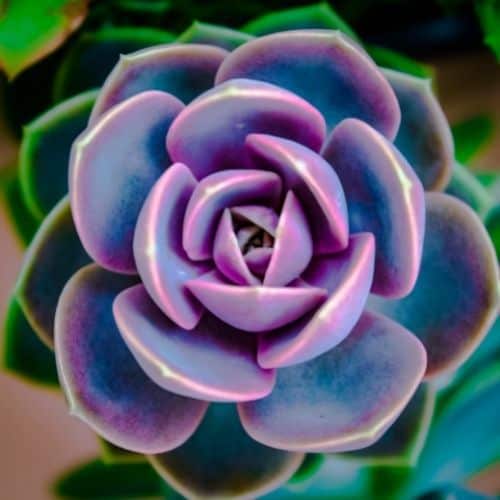
Echeveria ‘Perle von Nürnberg’ is a small evergreen succulent with pastel gray leaves that have purplish-pink highlights. The leaves have a fine white powder on them, which adds to its appeal. This succulent blends well in floral arrangements and grows on a slender stem. It is easy to propagate, making it very popular.
Graptopetalum ‘Superbum’
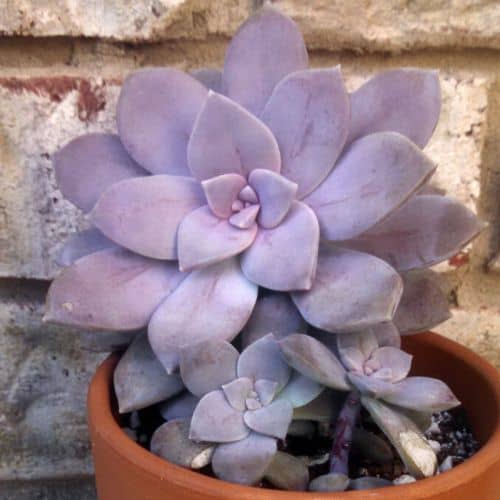
Graptopetalum ‘Superbum’ is a compact succulent with pale gray lavender to pink leaves. It forms open rosettes that can reach up to 5 inches wide. The rosettes grow on elongating stems that cascade beautifully over time. In early spring, it produces star-shaped pale yellow flowers with red markings.
Sedeveria Lilac Mist
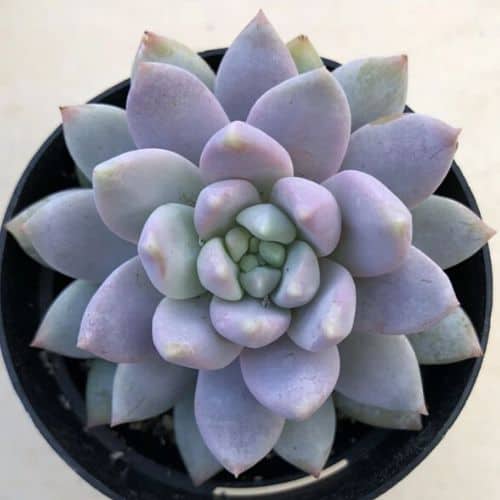
Sedeveria Lilac Mist is a recent hybrid succulent with grayish-green leaves that have a lilac blush. It has a rosette shape with fat leaves and grows compactly. The leaves are not easily detachable compared to other Sedum hybrids.
Graptoveria Debbie
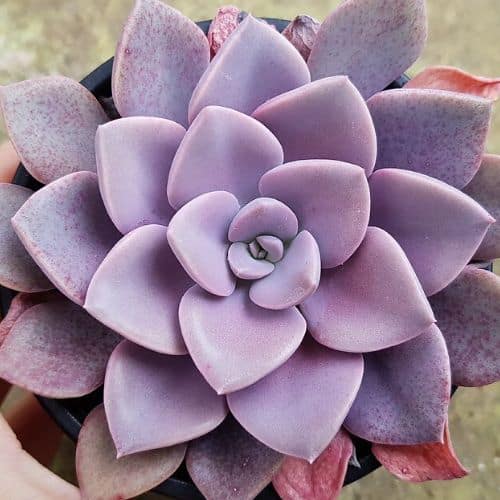
Graptoveria Debbie is a stunning succulent with lanceolate, frosty pink-purple leaves. The rosettes can grow up to 8 inches in diameter. The plant’s color becomes more intense in cooler temperatures, and it produces small apricot flowers in the spring.
Echeveria haagai ‘Tolimanensis’
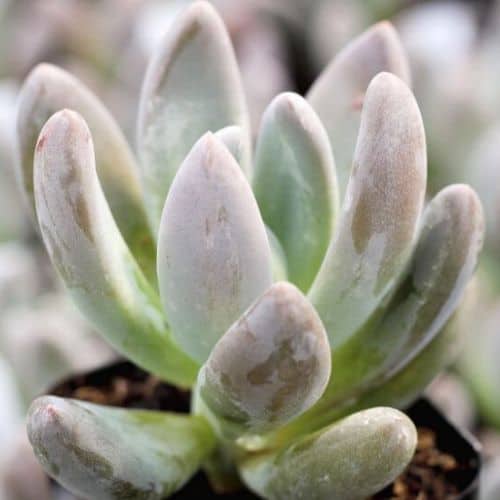
Echeveria haagai ‘Tolimanensis’ has fleshy, upright leaves that range in color from deep purple to dove gray. It forms a looser rosette and can grow quite tall while maintaining full leaf coverage. Each summer, it produces a tall bloom stalk with orange to yellow bell-shaped flowers.
Graptoveria ‘Araluen Gem’
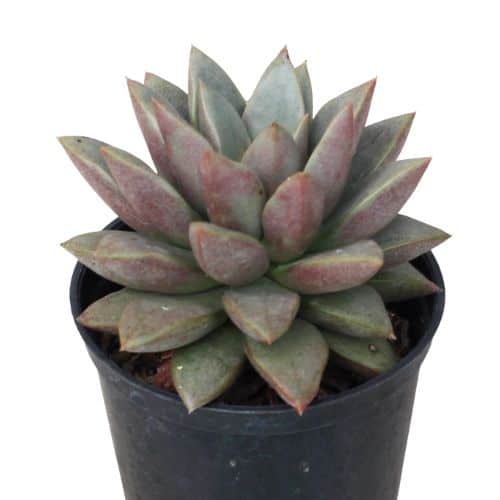
Graptoveria ‘Araluen Gem’ is an intergeneric hybrid with soft lilac to green leaves that have pink flushes. It can send up a tall bloom stalk with bell-shaped pink and yellow flowers. It is a cross between Graptopetalum paraguayense and Echeveria purpusorum.
Echeveria ‘Afterglow’
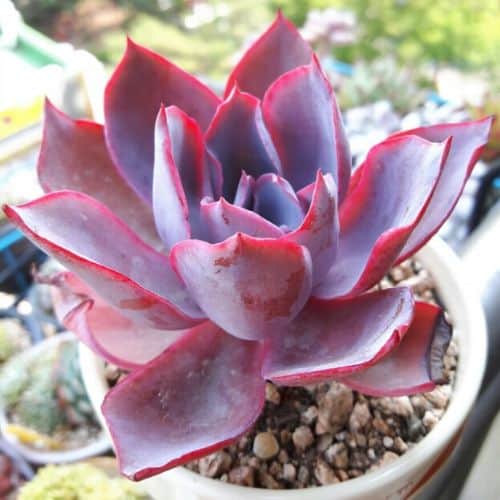
Echeveria ‘Afterglow’ is an evergreen succulent with lavender-pink leaves that have bright pink edges. The rosettes can reach up to 16 inches in diameter and grow on a short stout stem. It produces deep orange-red flowers either from below lower leaves or as the terminal flower stem.
Graptoveria ‘Fred Ives’
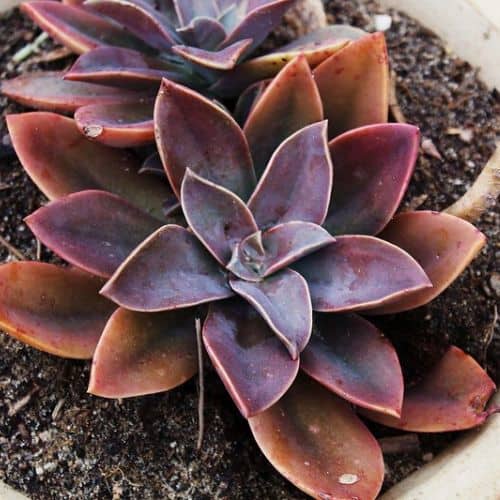
Graptoveria ‘Fred Ives’ forms large clumps of rosettes up to 12 inches wide. The leaves have shades of pearly bronze and pink, with possible variations in color depending on the time of year and growing conditions. It produces pale yellow flowers with red-orange centers on arching stems.
Echeveria ‘Cubic Frost’
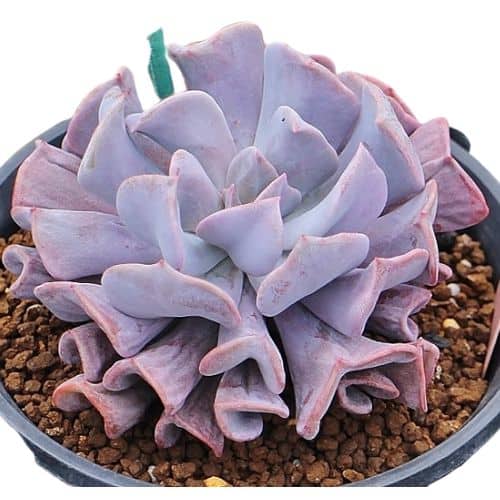
Echeveria ‘Cubic Frost’ is a purple succulent that grows up to 8 inches tall and 10 inches wide. It has lilac to pink lilac leaves, which can turn deep lavender when stressed. The leaves are distinctive, wavy, and fleshy with a thick wax overlay. In spring, it produces orange bell-shaped flowers.
Sedum Dasyphyllum ‘Lilac Mound’
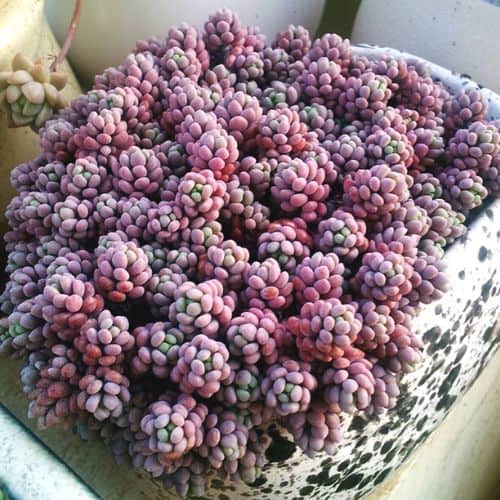
Sedum Dasyphyllum ‘Lilac Mound’ is a perennial succulent with blue-green and purple leaves that turn lavender in full sun. It forms shrubs with creeping stems and produces small white flowers with tiny black dots on the petals.
Kalanchoe x houghtonii
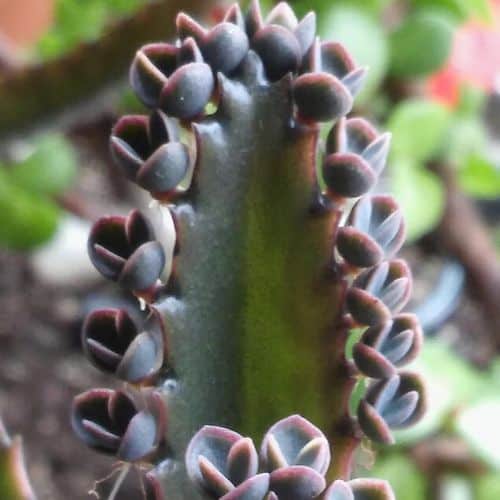
Kalanchoe x houghtonii is a bryophyllum type Kalanchoe that’s a hybrid of K. daigremontiana x K. delagoensis and ‘Mother of Thousands’, both being purple succulents as well.
It has narrow leaves that reach 3 to 6 inches long. It produces young plantlets along the leaf margins. This variety is aggressive and can dominate other plants. All parts of the plant are poisonous if ingested.
Sempervivum heuffelii ‘Notah’
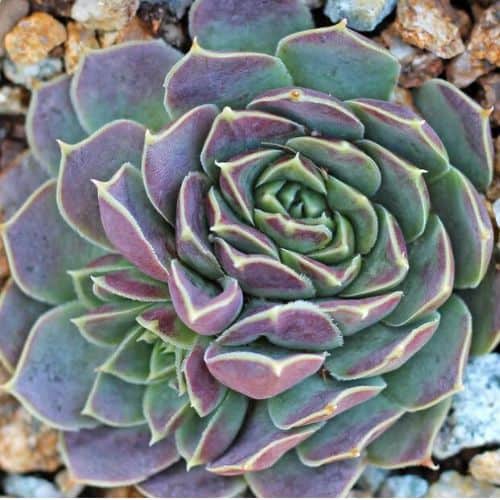
Sempervivum heuffelii ‘Notah’ is a beautiful succulent with jade green leaves that have a pink to lavender blush. The leaf margins are outlined with bright white. This cultivar changes colors throughout the seasons.
Echeveria ‘Neon Breakers’
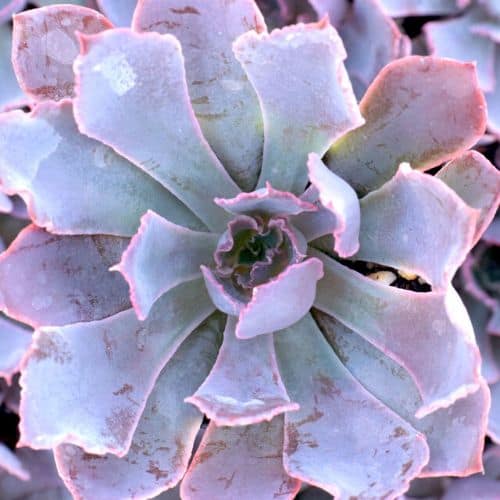
Echeveria ‘Neon Breakers’ has fluorescent magenta, orange, and purple tips on blue-green leaves. It displays bright neon colors when exposed to full sun. In late summer or early fall, it grows bright pink flowers on purple-ish stems.
Echeveria ‘Orion’
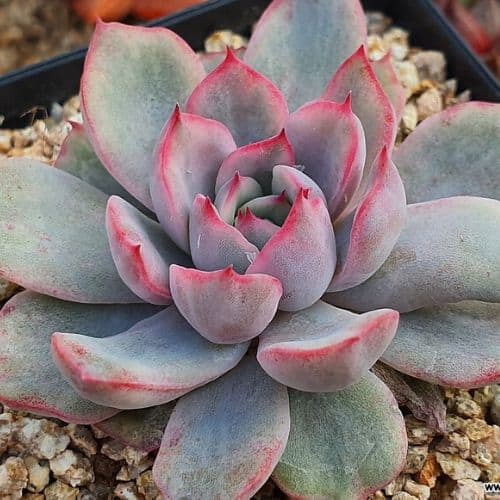
Echeveria ‘Orion’ is a silvery blue rosette that turns pink to purple in bright sunlight. It has a wide low rosette with round, slightly cupped leaves. It is a hybrid of E. lilacina and E. pulidonis.
Echeveria ‘Dusty Rose’
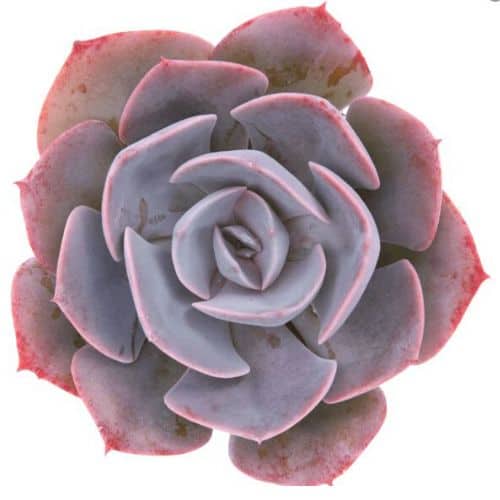
Echeveria ‘Dusty Rose’ is a type of purple succulent that grows in circular patterns with wide, powdery violet leaves. These beautiful plants become even more vibrant when exposed to sunlight. They can form clusters that are up to 8 inches in diameter. The flowers of this succulent are orange in color.
Sempervivum ‘Purple Beauty’
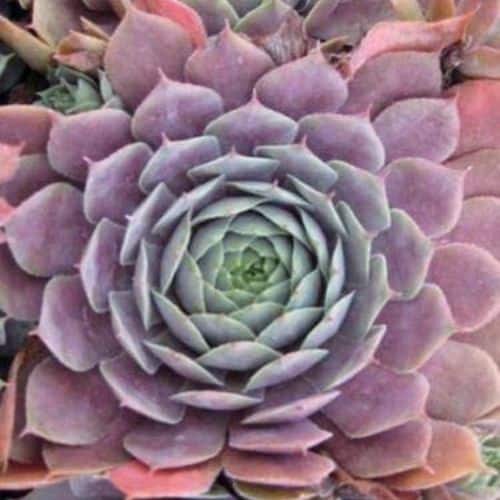
Sempervivum ‘Purple Beauty’ is another stunning succulent that has silvery pink rosettes with purple shading on the leaves. These succulents may have natural wax markings that resemble watermarks or wavy lines.
Anacampseros Rufescens
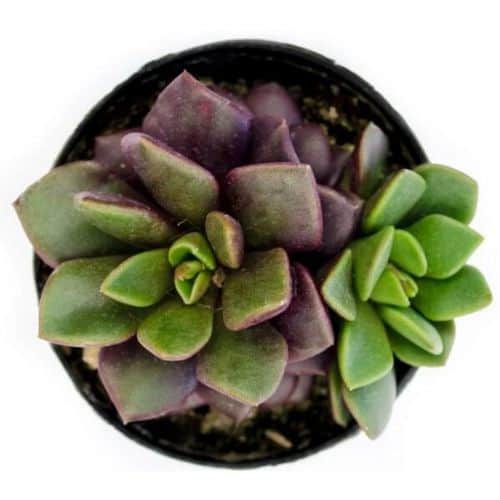
Anacampseros Rufescens is a perennial species of small purple succulent plants that are suitable for indoor containers. The tops of its leaves are dark green, while the underside has a rich purple color. When the plant is stressed, the green color gives way to red. The stem of this plant also has long white hairs. Its flowers are purple with yellow stamens.
Echeveria Black Prince
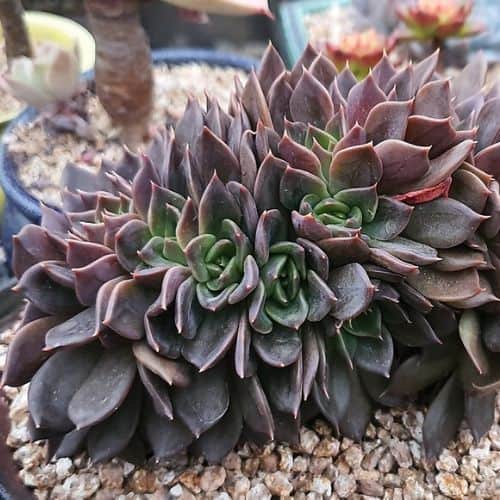
Echeveria Black Prince is a slow-growing purple succulent that forms clumps of short rosettes. These rosettes have thin, triangular, and dark leaves that are initially green but darken to a deep lavender brown when exposed to light.
Sempervivum ‘Raspberry Ice’
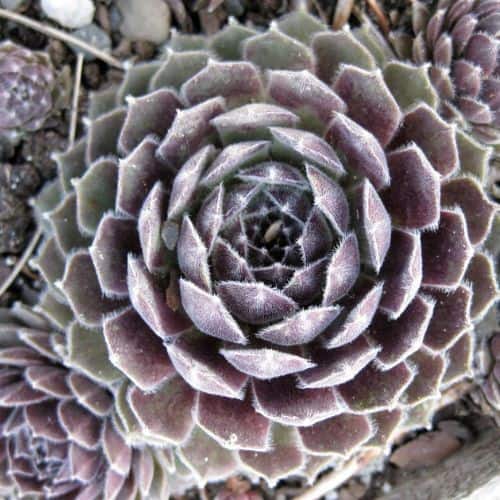
Sempervivum ‘Raspberry Ice’ is a dense and perennial succulent with raspberry-red leaves that turn purple-red when mature. The leaves of this plant have cobweb-like white hairs. It can grow large and form an impressive cluster. During summer, it produces clusters of unusual shell-shaped pink flowers above the foliage.
Echeveria Agavoides ‘Romeo’
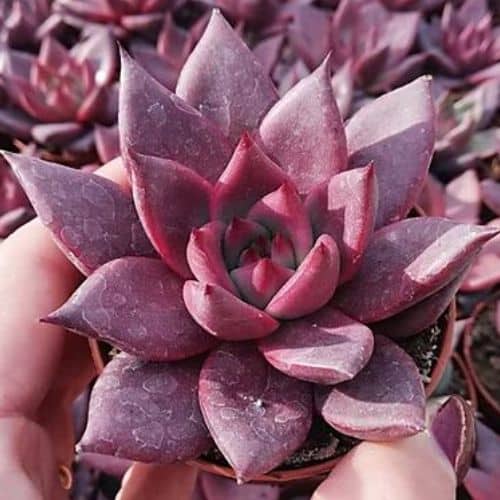
Echeveria Agavoides ‘Romeo’ is a distinctive purple succulent that forms compact rosettes up to 5 inches tall and 11 inches wide. Its leaves are grayish-purple with red edges. This variety requires bright light due to its dark burgundy color. In spring and summer, it produces slightly smaller red flowers with yellow tips compared to other Echeveria Agavoides species.
Echeveria ‘Chroma’
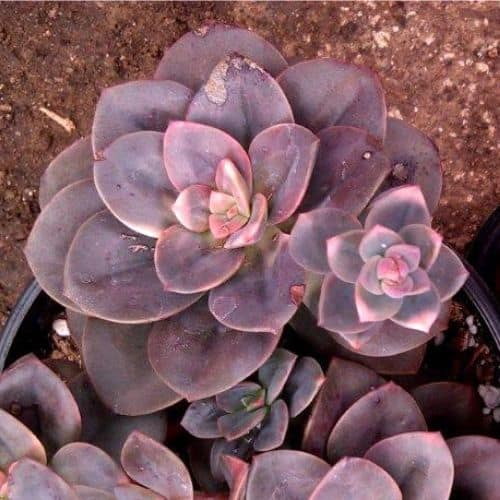
Echeveria ‘Chroma’ is a robust rosette with swirling shades of blue-green, purple, and peach. The appearance of this variety depends on the amount of light it receives. Every year, it produces tall bloom stalks with dangling yellow bell-shaped flowers.
Sempervivum heuffelii ‘Red Heuff f/ Munich University’
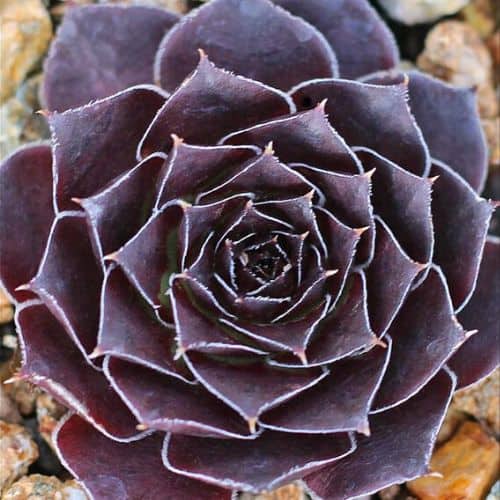
Sempervivum heuffelii ‘Red Heuff f/ Munich University’ is a large red and green rosette that turns glossy near-black purple in winter. It has silvery leaf margins with tiny hairs.
Sempervivum heuffelii ‘Beacon Hill’
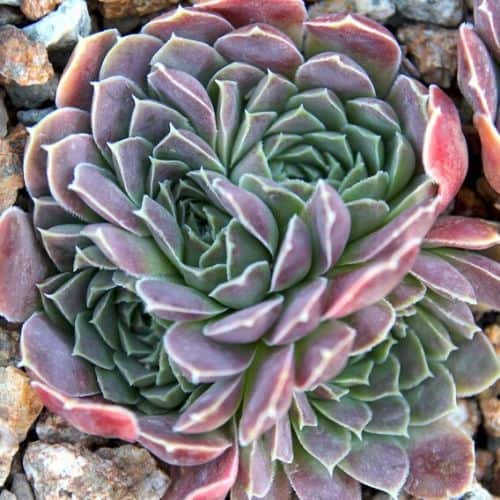
Sempervivum heuffelii ‘Beacon Hill’ has a delightful purple-bronze rosette that retains its color throughout the year. It can have a light green center with bright white margins outlining the leaves. This succulent is extremely hardy and drought-tolerant. It thrives outdoors in all seasons while maintaining vibrant colors.
Sempervivum heuffelii ‘Violet’
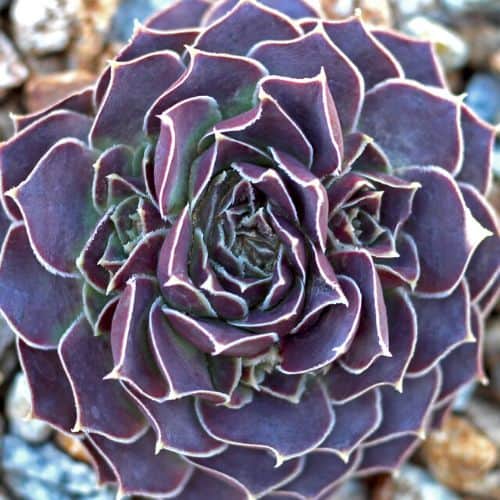
Sempervivum heuffelii ‘Violet’ is a wonderful blush red rosette that deepens to purple as winter approaches. It has a trace of blue-green at the base and bright white margins on the leaves.
Sedeveria ‘Sorrento’
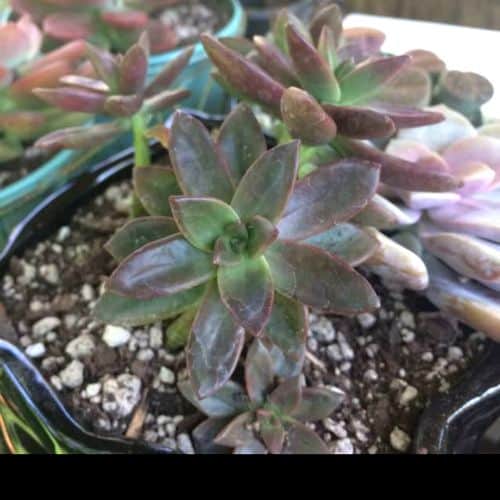
Sedeveria ‘Sorrento’ has bronze to coral foliage with a bright green center. It displays its most vibrant colors when grown in direct sunlight. The leaves have distinct light veins. This sedeveria produces yellow blooms during summer.
Sempervivum heuffelii ‘Mystique’
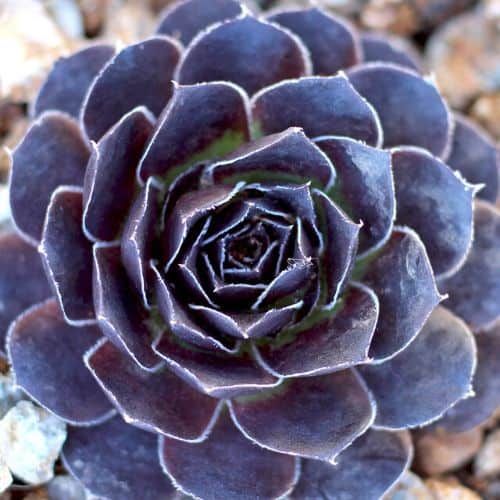
Sempervivum heuffelii ‘Mystique’ is a fairly large rosette with reddish-brown leaves and a hint of green at its center. The silver cilia lining the leaves give it a glowing effect. It turns a near-black shade of purple in winter while maintaining vibrant colors throughout the year.
Sempervivum heuffelii ‘Inferno’
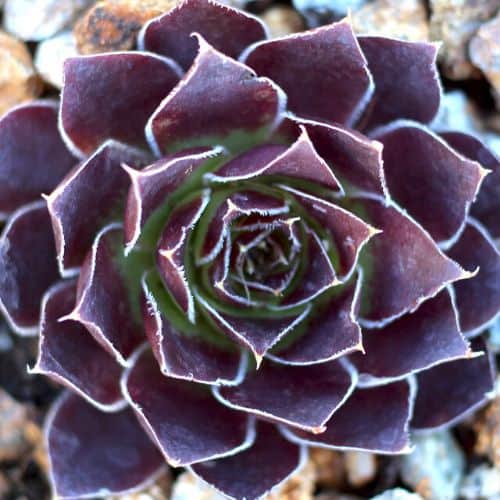
Sempervivum heuffelii ‘Inferno’ is a cultivar descended from S. heuffelii ‘Tan’. It is a brilliant red rosette with a green heart that turns purple in winter. The leaves are outlined with a heavy silver fringe of cilia. It can grow quite large.
Sempervivum heuffelii ‘Purple Haze’
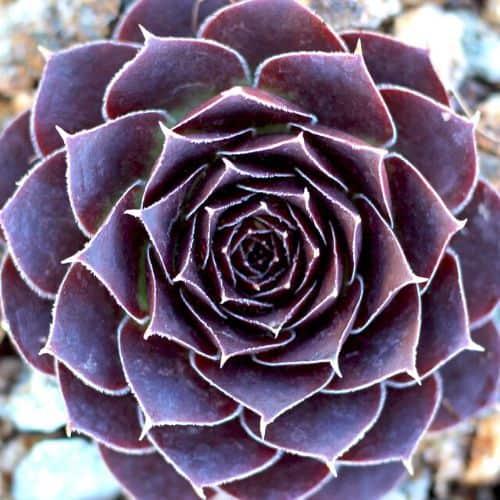
Sempervivum heuffelii ‘Purple Haze’ is a lavender to pink rosette with a muted green base tone. The leaves are lined with white, making it stand out. The colors deepen in cooler seasons but lighten during warmer months.
Sedeveria ‘Jet Beads’
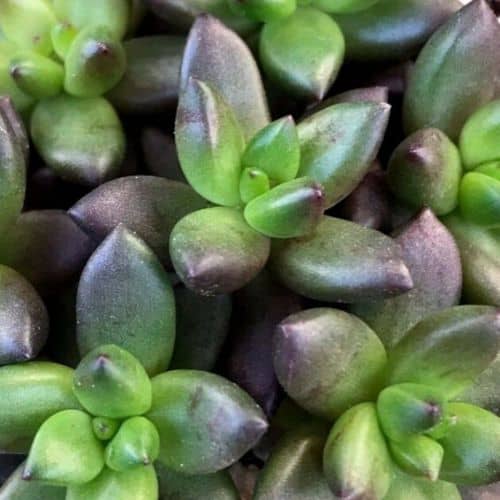
Sedeveria ‘Jet Beads’ has small pointed leaves with dark copper, green, burgundy, and black tones. The colors intensify in cool weather, especially around 40°F. These colors provide a striking contrast when paired with more common pastel succulents. It grows up to 4 inches tall with short stems and can produce yellow flowers in summer.
Sempervivum heuffelii ‘Artemis’
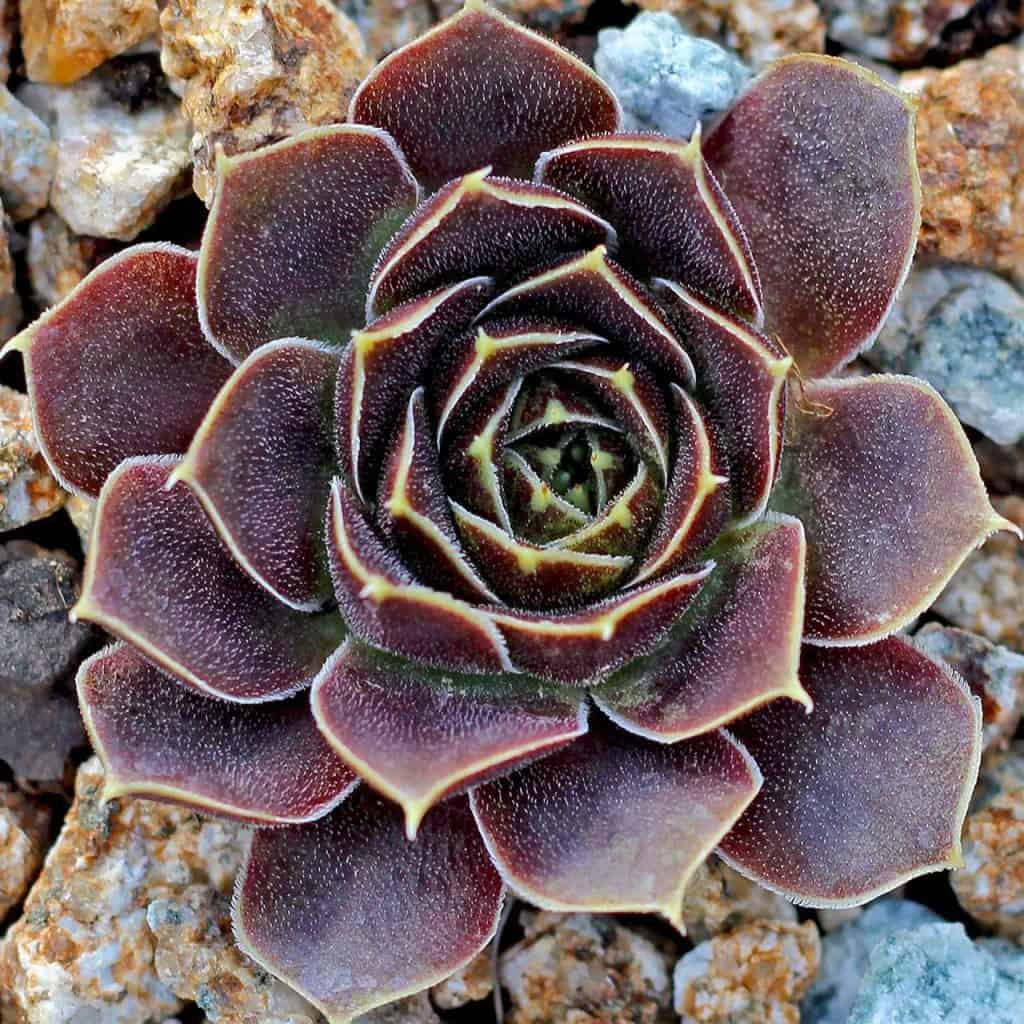
Sempervivum heuffelii ‘Artemis’ has a tidy pink to purple rosette with copper undertones. The leaves have a lightly fuzzy texture and are outlined with white cilia. The entire rosette turns dark purple in winter.
Sempervivum heuffelii ‘Hot Lips’
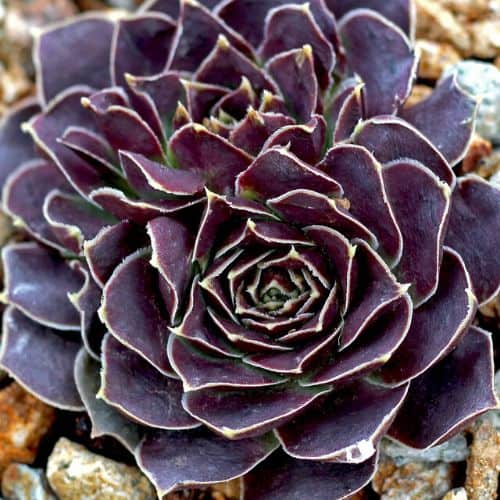
Sempervivum heuffelii ‘Hot Lips’ is a beautiful dusty rose to purple succulent with a touch of green at the base. The ciliated leaf margin adds a nice highlight to its wide-leaved rosette. This cultivar turns vibrant purple in winter and was bred from S. heuffelii ‘Chocoleto’.
Sempervivum heuffelii ‘Miller’s Violet’
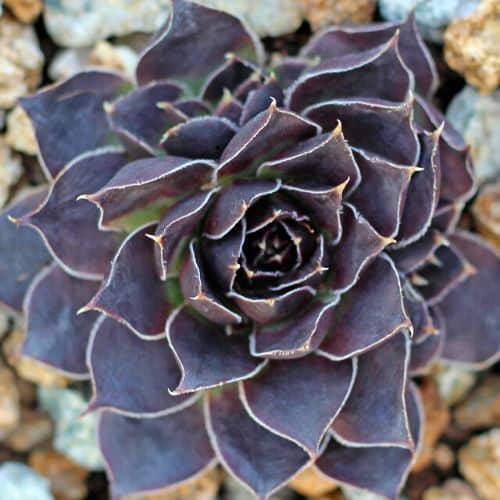
Sempervivum heuffelii ‘Miller’s Violet’ is a purple to burgundy rosette with a green center. As fall approaches, it takes on more blue tones and turns deep purple with a white outline.
Sempervivum heuffelii ‘Bora’
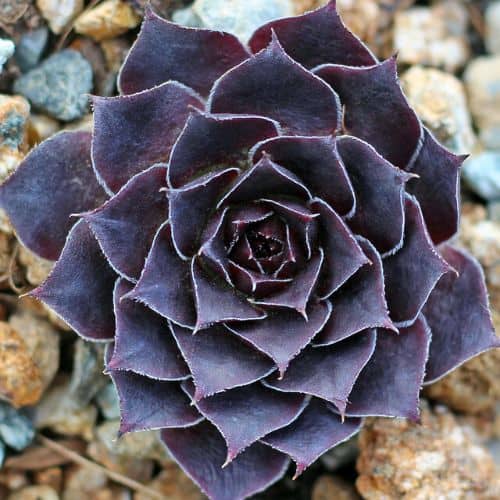
The plant called Sempervivum heuffelii ‘Bora’ is a beautiful red rosette with a lime green center. In the fall, its colors become very dark, almost blackish purple. The leaves of this plant have long fringes.
Sempervivum heuffelii ‘Brocade’
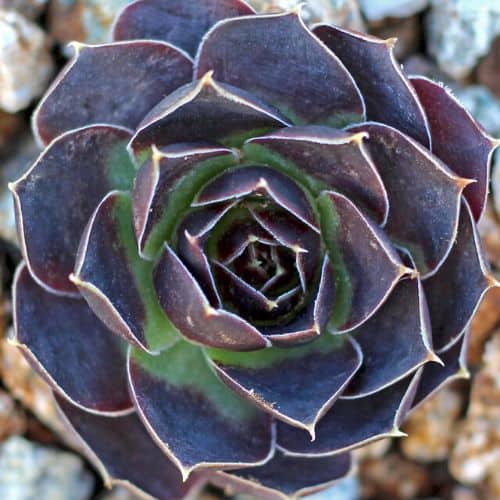
Another variety of Sempervivum heuffelii is called ‘Brocade’. It has a deep burgundy rosette with a bit of green at the center. During winter, it turns a deep purple, but the leaves are outlined with a bright white margin.
Chick Charms® Plum Parfait™
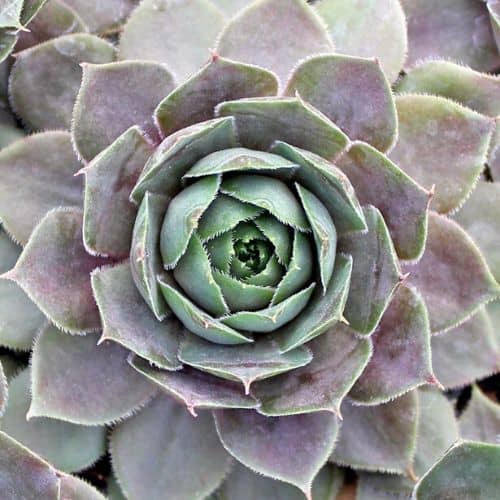
A cultivar known as Chick Charms® Plum Parfait™ (also called S. ‘Prairie Sunset’) has a warm appearance with shades of pink and gold. It may have distinct wavy lines due to a natural wax coating. In colder temperatures, it develops more purple tones.
Sempervivum heuffelii ‘Bermuda’
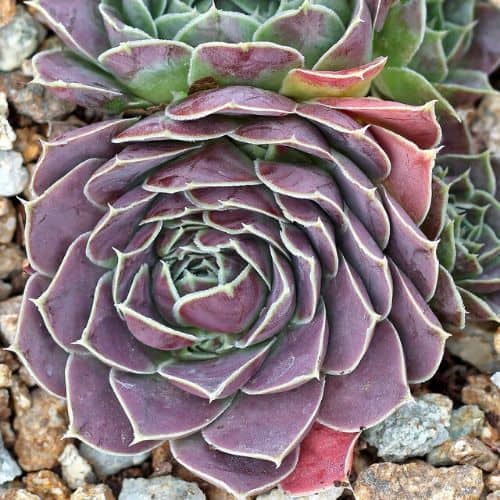
The Sempervivum heuffelii variety called ‘Bermuda’ is a lovely rosette that changes colors and has glowing white margins. Throughout the seasons, it shifts between blue-green, pink, and purple tones. In cold weather, it becomes completely purple.
Sempervivum ‘Killer’
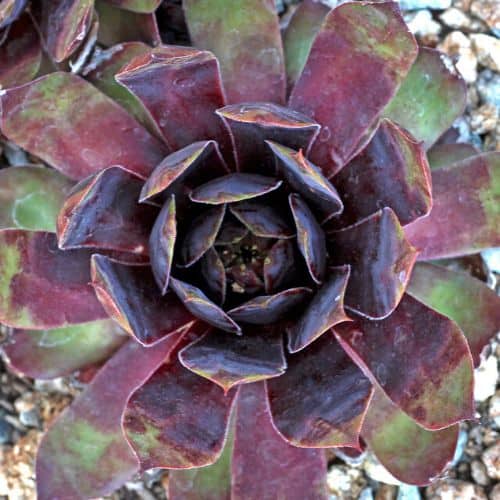
‘Sempervivum Killer’ is an attractive olive-green rosette with splashes of dark red to mahogany throughout the year. It has long, pointed leaves and produces new offsets on long stems. This variety prefers partial shade and a gravel top layer between the soil and leaves.
Sempervivum ‘Director Jacobs’
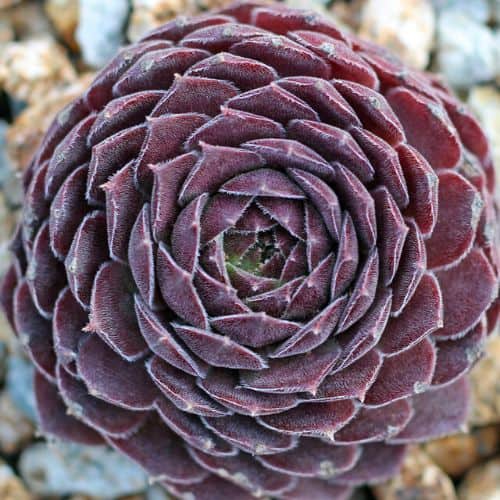
‘Sempervivum Director Jacobs’ is a popular variety known for its color and shape. It is a striking red with cupped leaves. The rosette has a frosty appearance due to the long white cilia covering it. In winter, it closes up and deepens to purple. Bright sunlight enhances its vibrant pigments.
Sempervivum ‘Pacific Blue Ice’
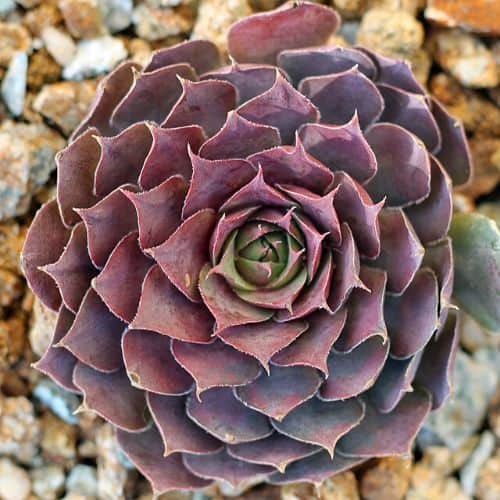
A stunning cultivar called ‘Pacific Blue Ice’ has a silvery blue color that can turn pink or purple. It is a medium to large rosette with short cilia on the leaves and watery patterns. This variety is strong and easy to grow.
Sempervivum ‘Thunder’
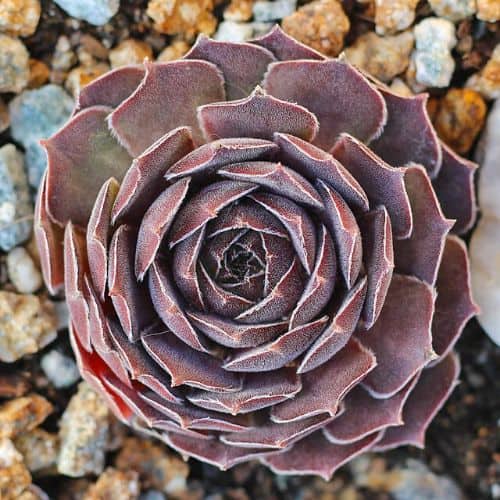
‘Sempervivum Thunder’ stands out with its unique form and color. It has wide, open rosettes with silvery green leaves tinged with rosy pink. In winter, it becomes a deep lavender shade, and in spring, it produces offsets on long, vibrant pink stems.
Sempervivum ‘Duke of Windsor’
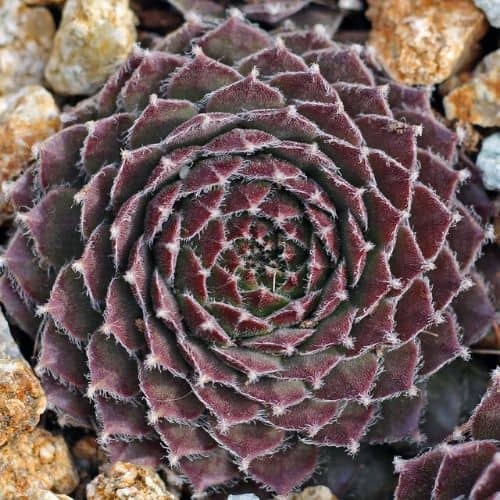
‘Duke of Windsor’ is a smaller rosette with densely packed leaves. The colors of this plant change between apple green and burgundy throughout the year. Every spring, it produces many new offsets and forms a neat clump.
Sempervivum heuffelii ‘Gild’
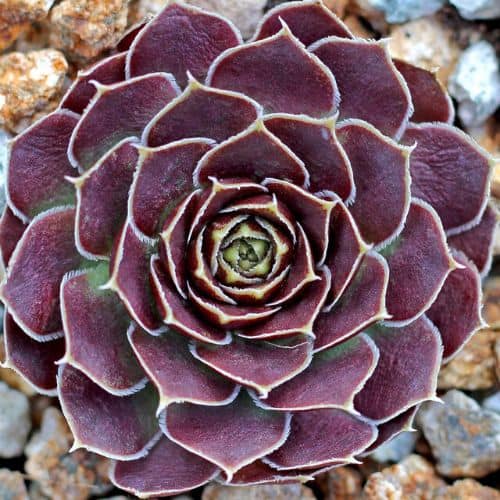
Sempervivum heuffelii ‘Gild’ is a pleasing rosette that displays various reddish tones as the seasons change. In summer, the leaves lighten to a coral pink, while shorter days in colder weather deepen them to royal purple. This cultivar has a bright white leaf margin and is a robust grower, forming an impressive clump over time.
Succulent Leaves Turning Purple: What’s Happening?
Succulent plants are generally green in color by nature. However, under the right circumstances, some of those green succulents will produce anthocyanins (pigments) which give them their red, blue, or purple color.
When a succulent changes color to red, blue, or purple, it is producing anthocyanins. Meanwhile, when a succulent changes color to yellow, orange, or red, it is producing carotenoids. The concept is similar to how the human skin produces melanin and changes color (a process called tanning).
So if you see your succulent leaves turning purple, there is no reason to worry! This is known as the succulent’s stress response.
The 3 criteria that affect the production of anthocyanins and carotenoids in succulents are light, water, and temperature. To induce a succulent to produce anthocyanins or carotenoids (hence a colorful appearance), you need to ‘stress’ the succulent. This can be done by adjusting the following conditions:
1. Light
Providing enough sunlight will cause succulents to stress and produce more anthocyanins and carotenoids. The more light they receive, the more vibrant their colors will be. Do be careful, however not to provide too much light that they get burned.
2. Water
Lack of water will cause succulents to stress, thus producing more anthocyanins and carotenoids. However, this needs to be done gradually as sudden deprivation of water can cause a succulent to wilt. This should be done by slowly reducing the frequency of watering without the succulent showing any signs of wilting.
3. Temperature
Succulent leaves change color more often in the cold, which is why you see more colorful succulents in the winter.
When stressing a succulent out, bear in mind to not make sudden changes and only change one variable at a time. For example, do not increase the light exposure and reduce watering at the same time. It is better to allow the succulent to adjust to its condition before changing another variable. That way, you can stress the succulents beautifully without damaging them.
